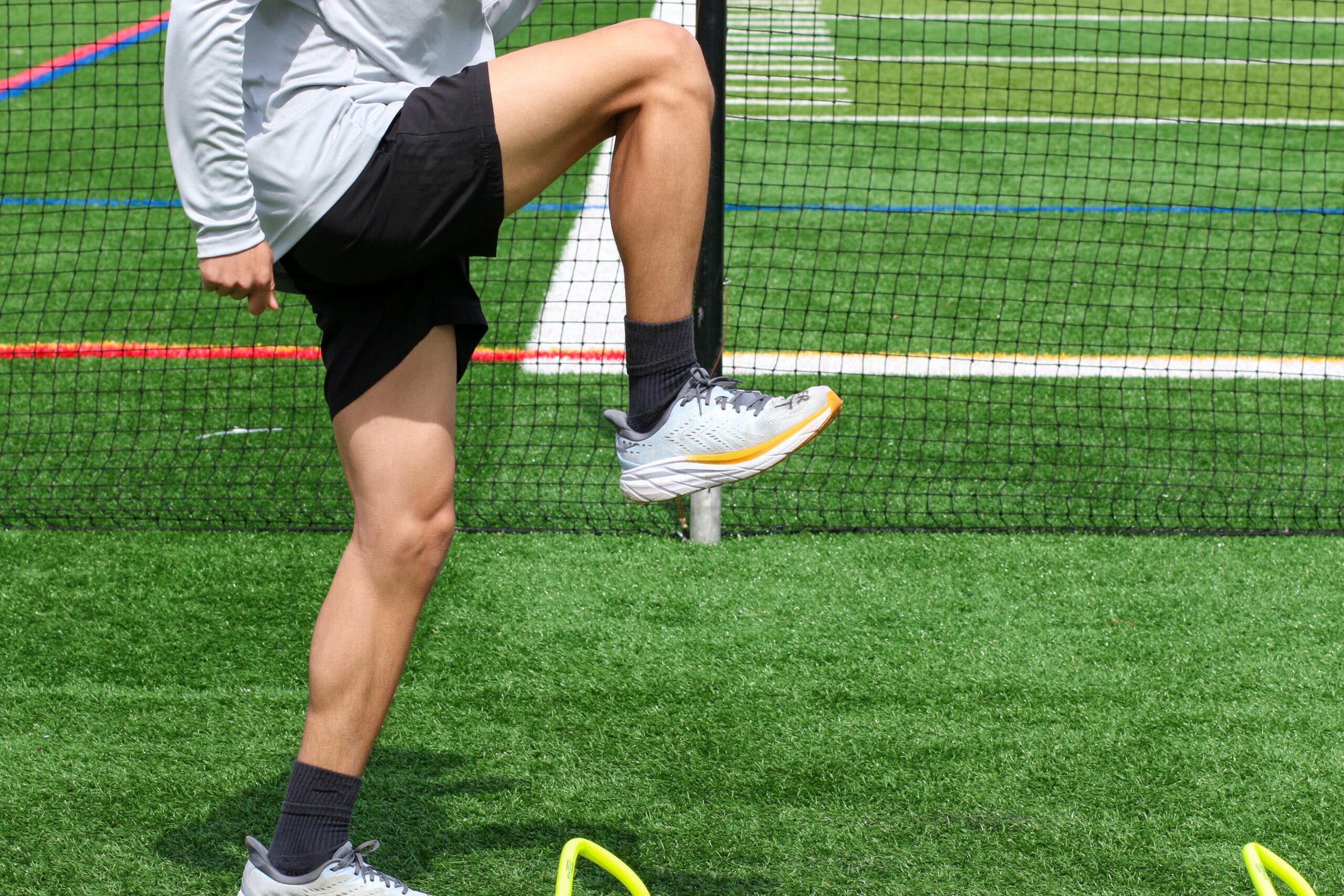How To Unlock Your Next PR By Recruiting More Muscle Fibers

Photo Credit: Greg Rosenke
Runners need to do more hard stuff in training.
Actually, let me back up and explain. I started running at age 14 and went on to run for eight years at the high school and college level. My outlook on running was forged in the competitive crucible of track and cross country.
We did a lot of hard stuff:
- Sprint workouts (running at 100% effort)
- Races (by definition, these are run at 100% effort)
- Strides and hill sprints (these are run at 95-100% maximum speed)
- Heavy weightlifting (Focusing on strength and power, not endurance or hypertrophy)
- 2+ hour long runs (running for a long time does similar things as running very fast)
- Plyometrics and drills (power-oriented skips, bounds, and jumps)
- Hill workouts (running against gravity at a variety of speeds)
After college, I started coaching adult runners. Since 2010, I’ve worked with thousands of older athletes from around the world who have goals as varied as running their first ultramarathon to qualifying for Boston and racing a sub-20-minute 5K.
In all of this exposure, I’ve noticed a trend. Competitive (and younger) runners tend to do a lot more of the activities I listed above. They run hard, lift weights, run long, and develop athletic skills through plyometrics and drills. In short: They do hard stuff!
Older runners simply don’t. If you’re an adult runner, especially without a background running on a team in high school or college, you likely need more of this work!
The commonality among all these difficult activities is that they recruit many more muscle fibers than easier activities, and that has enormous implications for the health and performance of runners who are consistent with them.
Why is Muscle Fiber Recruitment Important?
To make things uncomplicated, it’s helpful to think of muscle fiber recruitment as “using more of the muscle.” Doing hard things requires more of your muscles, where the central nervous system sends electrical signals to individual muscle cells (fibers) to contract.
The simplest example is comparing an easy effort run with a maximum effort race. The easy run doesn’t require much muscle fiber recruitment. Because it’s easy, every stride generates a lower amount of force, so your step rate is lower and your stride is shorter.

But a race requires more of your muscles. To generate more force, you have to recruit more muscle cells, which results in a higher cadence and longer stride.
The same is true for heavy weightlifting. Lifting a broomstick off the floor doesn’t require you to generate a lot of force; it requires very little of your muscles. But replace that stick with a barbell loaded with heavy plates, and you must activate more fibers to generate more force.
Runners who want to improve or who have performance goals have a strong interest in doing more activities that require higher muscle fiber recruitment. And the good news is that there is a huge opportunity here because this is a trainable skill.
Advanced runners who competed in college, currently have a coach, or can qualify for the Boston Marathon are well-versed in this skill. They know how to recruit more muscle fibers efficiently and powerfully, generating higher forces with less wasted movement. Their neuromuscular fitness is high, meaning they have efficient communication pathways between their brain and muscles.
It’s a skill that results in improved running economy (less energy is used to run at a given effort) and better performances (i.e., you race faster!). It also increases strength and durability, helping runners stay healthy and prevent injuries.
When you have better access to more of your muscle fibers, can run more economically with less wasted movement, and can generate higher forces (i.e., you’re stronger), you’ll be far less prone to running injuries.
How to Recruit More Muscle Fibers
Now that we know how important it is to regularly recruit as many muscle fibers as possible, we have to build high-recruitment activities into our training program.
Thankfully, most runners already include some of these training elements! We just need to be more consistent over time.
Again, focus on the activities mentioned above:
- Sprints / Speed development
- Races (the shorter, the better)
- Strides and hill sprints
- Lifting weights (relatively heavy weight)
- Long runs
- Drills and plyometrics
- A variety of hill workouts
These activities exist near the “high recruitment” end of a spectrum of muscle fiber recruitment.
But they don’t all use the same mechanism to accomplish this task. Most (like maximum effort running and heavy lifting), recruit more muscle fibers because they are intense, high-power, and high-force activities.
When you have better access to more of your muscle fibers, can run more economically with less wasted movement, and can generate higher forces (i.e., you’re stronger), you’ll be far less prone to running injuries.
Long runs and hill workouts work differently. These runs gradually fatigue muscle fibers so that more and more fibers need to get recruited to pick up the slack. As we get tired, our slow-twitch fibers fatigue and we start recruiting more fast-twitch fibers. This has the double benefit of training fast-twitch fibers for endurance and training them to work better in conjunction with slower twitch fibers.
While drills and plyometrics are high-force activities, they also encourage us to recruit fibers in the proper sequence. They help us achieve larger ranges of motion, improve coordination, and increase our ability to produce force quickly. You may see your ground contact time decrease as you more powerfully strike the ground and “bounce” into your next stride!
When completed regularly, these activities will provide athletes the benefits of speed, performance, injury resilience, and strength.
Progress Slowly with Hard Things
All the training activities mentioned here are difficult and should be treated as “high risk, high reward.” None of us should begin aggressive plyometrics, speed work, long runs, or weightlifting without ensuring we’re ready first.
No matter your ability, you can take steps to recruit more muscle fibers:
- Gradually increase the distance of your long run
- Transition strength training from body weight to weighted exercises
- Run strides 2-3x per week
- Add 2-3 form drills to your training before workouts
- Race regularly, including shorter tune-up races
If you’re following a well-thought-out program or have a coach, you can slowly add plyometrics, explosive weightlifting movements, and speed development. These activities have the highest risk of running injuries so follow best practices and always err on the side of caution.
This progressive approach will help you improve the skill of muscle fiber recruitment while keeping the risk of injury as low as possible.
Soon, you’ll be a stronger, faster, and healthier runner!